Do you want to know the right way to pack a duffel bag? If so, you have found the right place. Your energy levels may be seriously strained if you overpack your carry-on bag.
Perhaps you are unsure if a duffel bag qualifies as a carry-on; actually, it does not quite qualify as a carry-on due to its increased size and weight.
Nevertheless, it remains a practical choice for storage and travel. After covering countless miles on the road, one becomes seasoned and discerning about what to include in their packing list, and a duffel bag typically secures a well-deserved spot.
You may say goodbye to the stress of rushing to the pharmacy on vacation or at the airport by using a logical and precise packing technique. So, continue reading if you want to discover the secrets of duffel bag packing.
How to Pack Clothes
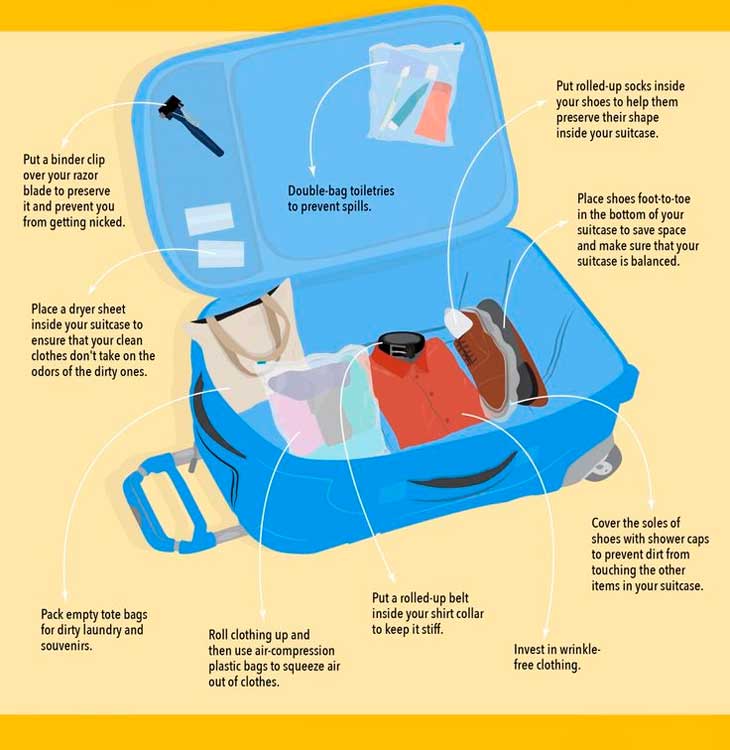
List Out All the Essentials
Creating a comprehensive travel checklist can address a significant portion of your packing concerns. This approach not only prevents overpacking but also serves as a handy tool for ensuring you have all the essential items accounted for. Begin by enumerating the following.
Clothing
Determine the number of outfits you require based on the duration of your stay. Do not overlook the need for additional footwear.
Medication
List any necessary medications you must bring along.
Documents
Compile a list of all essential documents and paperwork essential for your trip.
Other essentials
Include items like a laptop, an extra carry-on bag, snacks, and mobile accessories on your checklist.
By systematically listing these essentials, you will streamline your packing process and have peace of mind knowing you have not forgotten any crucial items for your journey.
Compartmentalize Your Stuff
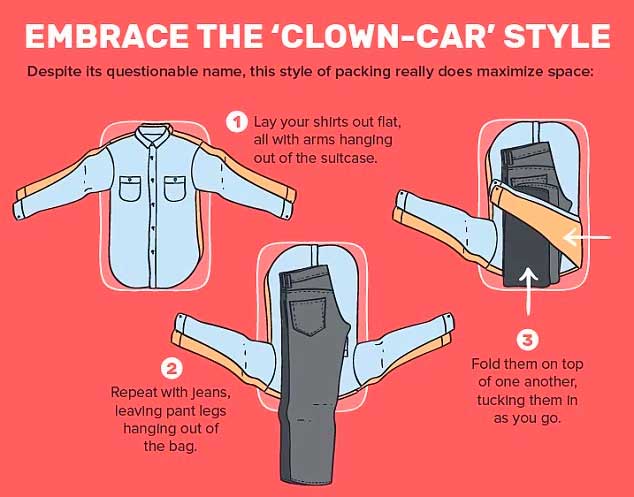
This process involves the strategic placement of items within your bag. You can organize your belongings into various categories such as emergency supplies, personal care items, clothing, shoes, mobile accessories, socks, handkerchiefs, towels, blankets, and so forth.
Utilize pockets within your bag to store smaller items, preventing them from scattering. If you require additional storage for these smaller yet essential items, consider employing smaller carry-on bags.
These smaller compartments, like personal care utility pouches and compression bags, facilitate neat and orderly packing while efficiently fitting inside your backpack.
Roll Your Clothes

Items you would not immediately need should be placed at the bottom of your duffel bag, with a particular emphasis on your clothing. To streamline access to your essentials and prevent constant digging into the bag, position your frequently used items near the bag's zipper.
Rolling your clothes is a great technique for maximizing space in a duffel bag. Create cylindrical rolls from your clothing and arrange them in a linear fashion.
Fold your undergarments, shirts, and jeans in half lengthwise before tightly rolling them into cylinders. Secure everything in place with rubber bands while rolling gently to avoid wrinkles.
Stuff in According to Use Case
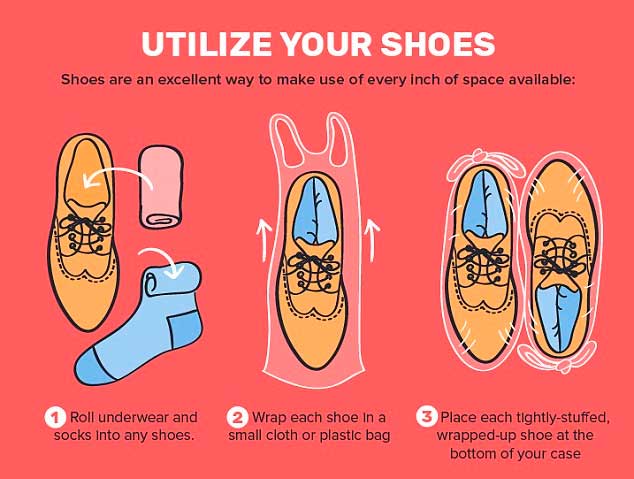
If you intend to carry your duffel bag as a backpack, it is essential to pack it in the following manner for optimal organization: Bottom layer.
Start with a bottom layer where you place large and bulky items like shoes, camera bags, hard cases, and a laptop securely placed in a hard case. Additionally, position any items you would not need immediately at the bottom of your bag.
Middle layer
Create a middle layer by rolling up clothes, towels, and blankets using the army fold technique. The center of the bag is where you should place these goods to guarantee a tight fit. Cover any remaining spaces in the bottom layer with t-shirts, socks, or other things that can be folded.
Top layer
Reserve the top layer for heavy items. Here, you can also store items that require immediate access, such as snacks and a charging cord, making them easily reachable.
These are straightforward strategies to effectively pack your duffel bag. Remember that planning is the key to successful packing. Be mindful of your travel needs and preferences, and arrange all necessary items in advance to avoid last-minute shopping rushes.
Ensure your medical kit contains the required medications tailored to your travel plans and plan their usage according to when and where you might need them.
Do Not Overpack
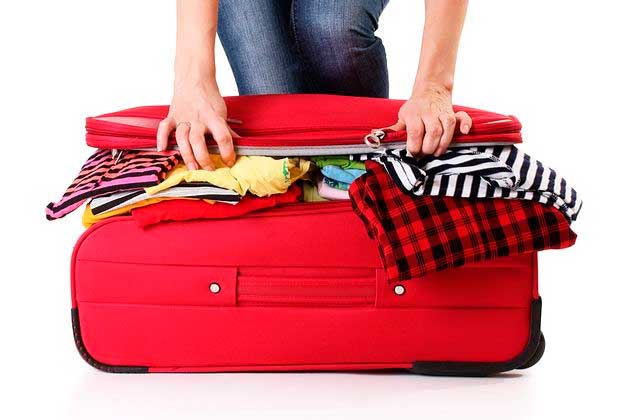
It is a good idea to avoid overloading your duffel bag if you intend to carry it on your shoulder, as doing so might cause rapid weariness. It might be difficult to carry the backpack comfortably over a long distance on one shoulder when it is overstuffed, as the weight is distributed unevenly.
Another strategy is to plan for laundry during your travels, enabling you to extend the use of the clothing you bring. Ideally, your bag should zip up without excessive force, ensuring ease of use.
How Big Should Your Travel Duffel Bag Be?
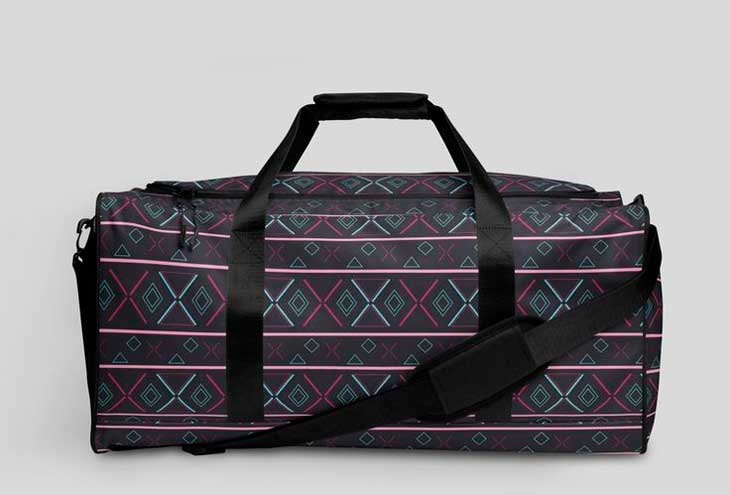
It is important to consider the purpose of your trip and the products you want to bring when choosing a duffel bag. Here are some essential considerations
Size
Your duffel bag should be the appropriate size for the kind of vacation you are doing. For a weekend break, a small duffel bag should be plenty; however, a longer trip could call for a bigger bag.
Trip type
Consider the specific nature of your trip. If you are embarking on a camping adventure, your bag requirements will differ from those for a business trip.
Features
Seek out a duffel bag equipped with features tailored to your needs. Look for a bag with a shoulder strap and carrying handles if you desire a purse that can be worn on your back.
Material
Your duffel bag’s material selection is quite important. If you anticipate using the bag outdoors, opt for a durable material that can withstand rugged conditions.
Tips for the Best Way to Pack a Duffel Bag
Here are some tips to help you pack efficiently.
- Prioritize lightness: Avoid packing unnecessary items to keep your load light.
- Embrace reusables: Opt for reusable items like water bottles, napkins, and plates to minimize the quantity of disposables, creating more space.
- Wear heavy clothing: Travel while wearing your bulkier clothing items such as jackets and shoes to reduce the weight of your bag.
- Choose the right size: Select an appropriately sized duffel bag, especially for air travel, to avoid overpacking.
- Utilize all pockets: Make the most of both the external and internal pockets in your bag.
- Organize documents: Keep essential documents like your passport, ticket, and boarding pass in one of the outer pockets or a separate bag for easy access.
- Strategic packing: When filling the top layer of your bag, shake it gently to settle items and create extra space for your belongings.